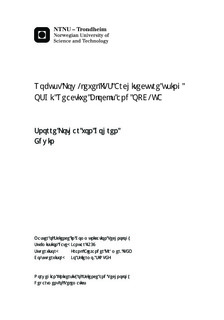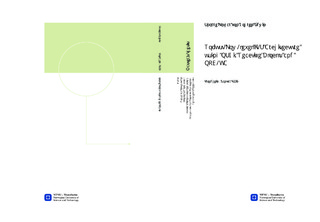| dc.description.abstract | The vehicle traffic flows on a daily basis, and it works. People get from A to B, sometimes using longer time than expected because of traffic or accidents. Transport vehicles arrive without a notice and valuable traffic and environmental data is not collected. How should the future traffic control be and what are the possibilities? These are issues which concern Statens Vegvesen on a daily basis. Currently there are ongoing research figuring out how a general Intelligent Transport System (ITS) station should be specified. A high level functional specification has been written, and propose multiple use cases and functionality for the future. This thesis will embark on the low level technical issues regarding a general ITS station. Focusing on robustness, upgrading and expanding, combining Reactive Blocks (RB), Open Services Gateway initiative (OSGi) and Open Platform Communications Unified Architecture (OPC-UA) in a technical architecture. Statens Vegvesen have pointed out that these three terms are important factors to be handled, for them to be able to develop ITS stations to the satisfactory level they strive for. So if this thesis can show that it can become easier to create new applications with RB, opening up for application updates without downtime through OSGi and providing a familiar communication layer with OPC-UA. That will benefit Statens Vegvesen in many ways. The reason for the selection of these technologies are that the domain is a perfect match for OSGi,providing the lifecycle aspect into the architecture. Statens Vegvesen is familiar with OPC and OPC-UA, it provides a way of standardizing hardware and enabling an advanced communication protocol out of the box. RB is a technology which is created at the institute this thesis is written for, and merge two difficult domains by visualizing code through blocks and flows, meaning that better code control is provided. So they all have their specific traits which can be combined into a valuable consolidation. A prototype architectural application was made through out several iterations discussing the different issues which arose during development. It became a foundation platform which allowed for expansion by deploying additional functional OSGi bundles.The technological combination with the specific focuses became a satisfactory prototype architecture. It enables the application to react on edge cases in a useful way, upgrade the software to handle the edge cases without downtime, and improve the station with new applications for different use cases. This original technological combination have paved the way for a solution to be contrived in the coming years. This thesis is meant as a foundation to decide if this is a fitting road towards a distinguished ITS station architecture. | nb_NO |

